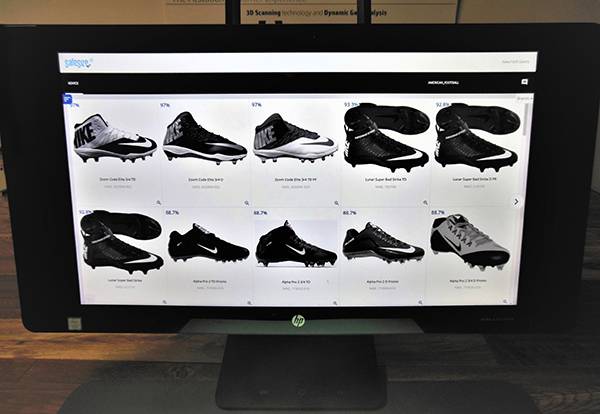HP Inc. and the NFL will exploit FitStation powered by HP—that uses 3D scanning to recommend players customized solutions of cleat.
Since the launch of the FitStation platform in September 2017, HP aims at offering individual shoe and insole recommendations and 3D printed insoles.
As a reminder, the hardware and software platform captures 3D scans. The 3D scanning enables to measure the customer’s foot length, width and volumetric data in order to determine the shoes that best fit him. Once individual digital profiles are brought out, algorithms enable to match the digital profile of a player with previously scanned 3D images of Nike, Adidas and Under Armour football cleats.
Still in the footwear industry, Brooks Running Company took advantage of the FitStation platform and Superfeet’s services to achieve the most personalized running footwear.
NFL’s commitment to enhance player health and safety
‘‘A shoe is not just about performance, it is an important piece of protective equipment. In the NFL, lower limb injuries are responsible for a significant amount of player time lost. A better-designed shoe can be a protective mechanism against injuries such as turf toe, Lisfranc fractures, and high ankle sprains,” said Dr. Richard Kent, a professor of Mechanical & Aerospace Engineering, Biomedical Engineering, and Emergency Medicine at the University of Virginia and a member of the NFL Musculoskeletal Committee.

FitStation captures up to 500 precise measurements per second. The high-quality 3D scanner contains nine cameras to automate length, width and arch-height calculation for a custom fit.
The league’s Musculoskeletal Committee, which analyzes injury data and trends and studies injury mechanisms and prevention, definitely saw in FitStation the capacity to produce individualized data to achieve shoe selection that best matches the anatomy.
For further information about 3D Printing, follow us on our social networks and subscribe to our newsletter!
//pagead2.googlesyndication.com/pagead/js/adsbygoogle.js
(adsbygoogle = window.adsbygoogle || []).push({});






